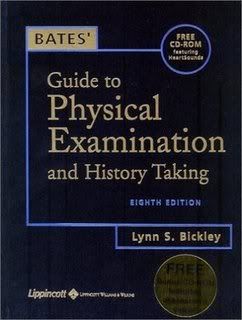Barbara Bates Propedeutica Pdf
� � � �� � �� � � � � C H A P T E R 11 C H A P T E R 1 � A N O V E R V I E W O F P H Y S I C A L E X A M I N A T I O N A N D H I S T O R Y T A K I N G 1 The techniques of physical examination and history taking that you are about to learn embody time-honored skills of healing and patient care. Your abil- ity to gather a sensitive and nuanced history and to perform a thorough and accurate examination deepens your patient relationships, focuses your patient assessment, and sets the direction of your clinical thinking.
The quality of your history and physical examination governs your next steps with the patient and guides your choices from the initially bewildering array of secondary testing and technology. Over the course of becoming an accomplished clinician, you will polish these important relational and clinical skills for a lifetime.
As you enter the realm of patient assessment, you begin integrating the es- sential elements of clinical care: empathic listening; the ability to interview patients of all ages, moods, and backgrounds; the techniques for examining the different body systems; and, finally, the process of clinical reasoning. Your experience with history taking and physical examination will grow and expand, and the steps of clinical reasoning will soon begin with the first moments of the patient encounter: identifying problem symptoms and abnormal find- ings; linking findings to an underlying process of pathophysiology or psycho- pathology; and establishing and testing a set of explanatory hypotheses. Work- ing through these steps will reveal the multifaceted profile of the patient before you. Paradoxically, the very skills that allow you to assess all patients also shape the image of the unique human being entrusted to your care. Cyclops Safety Cameras.
Clinical Assessment: The Road Ahead This chapter provides a road map to clinical proficiency in three critical areas: the health history, the physical examination, and the written record, or “write-up.” It describes the components of the health history and how to or- ganize the patient’s story; it gives an approach and overview to the physical ex- amination and suggests a sequence for ensuring patient comfort; and, finally, it provides an example of the written record, showing documentation of find- ings from a sample patient history and physical examination. By studying the subsequent chapters of the book and perfecting the skills of examination and history taking described, you will cross into the world of patient assessment— gradually at first, but then with growing satisfaction and expertise.

